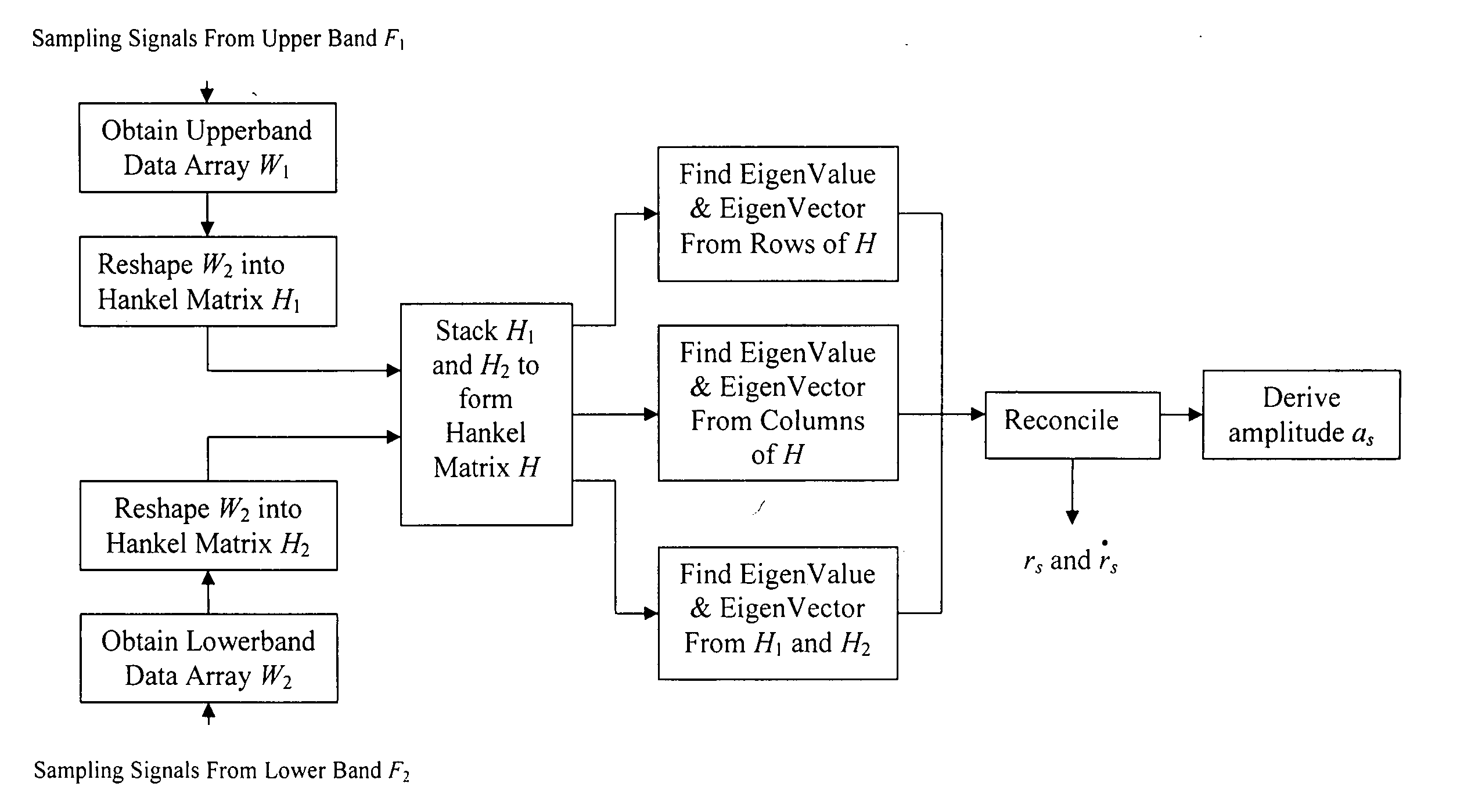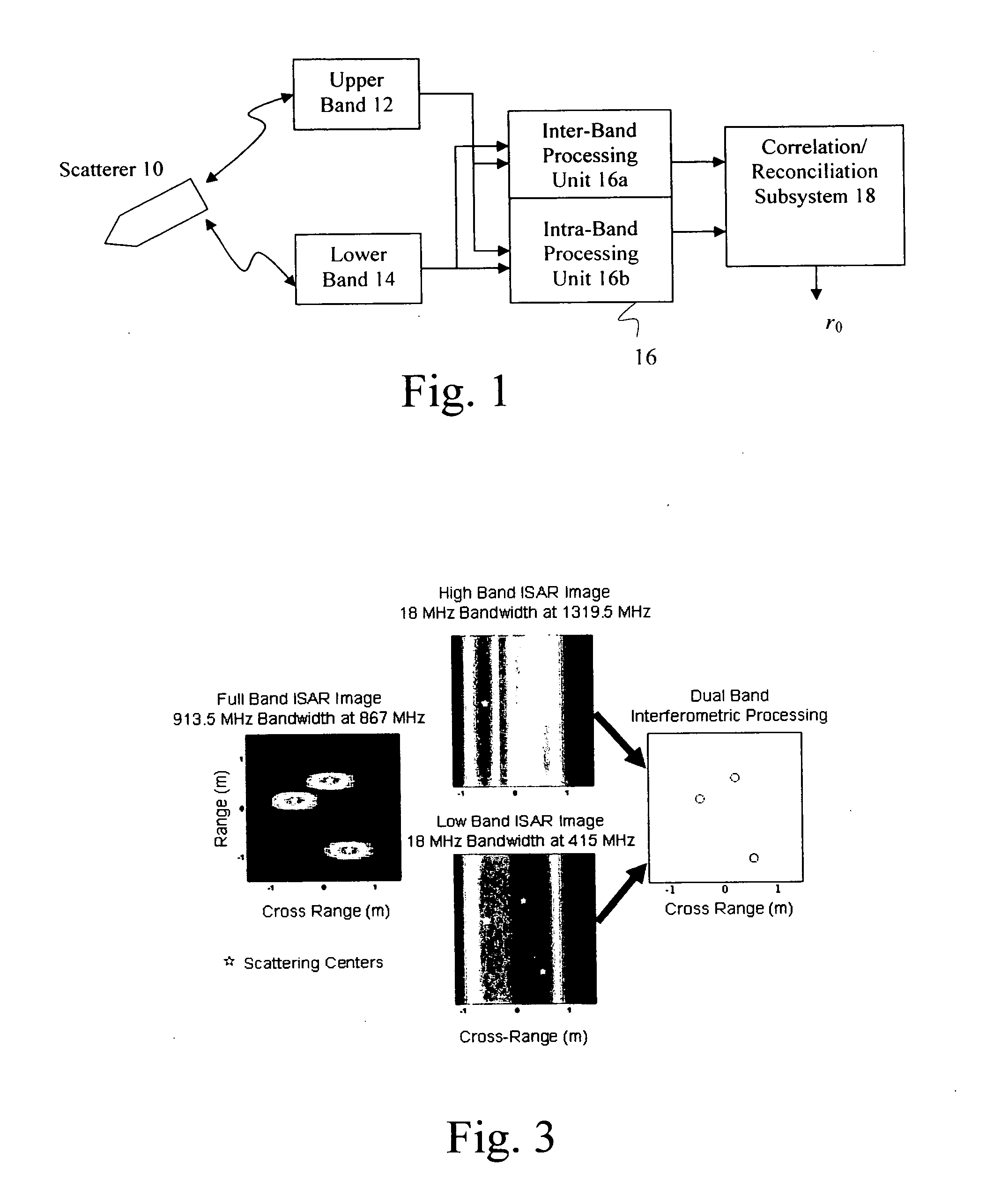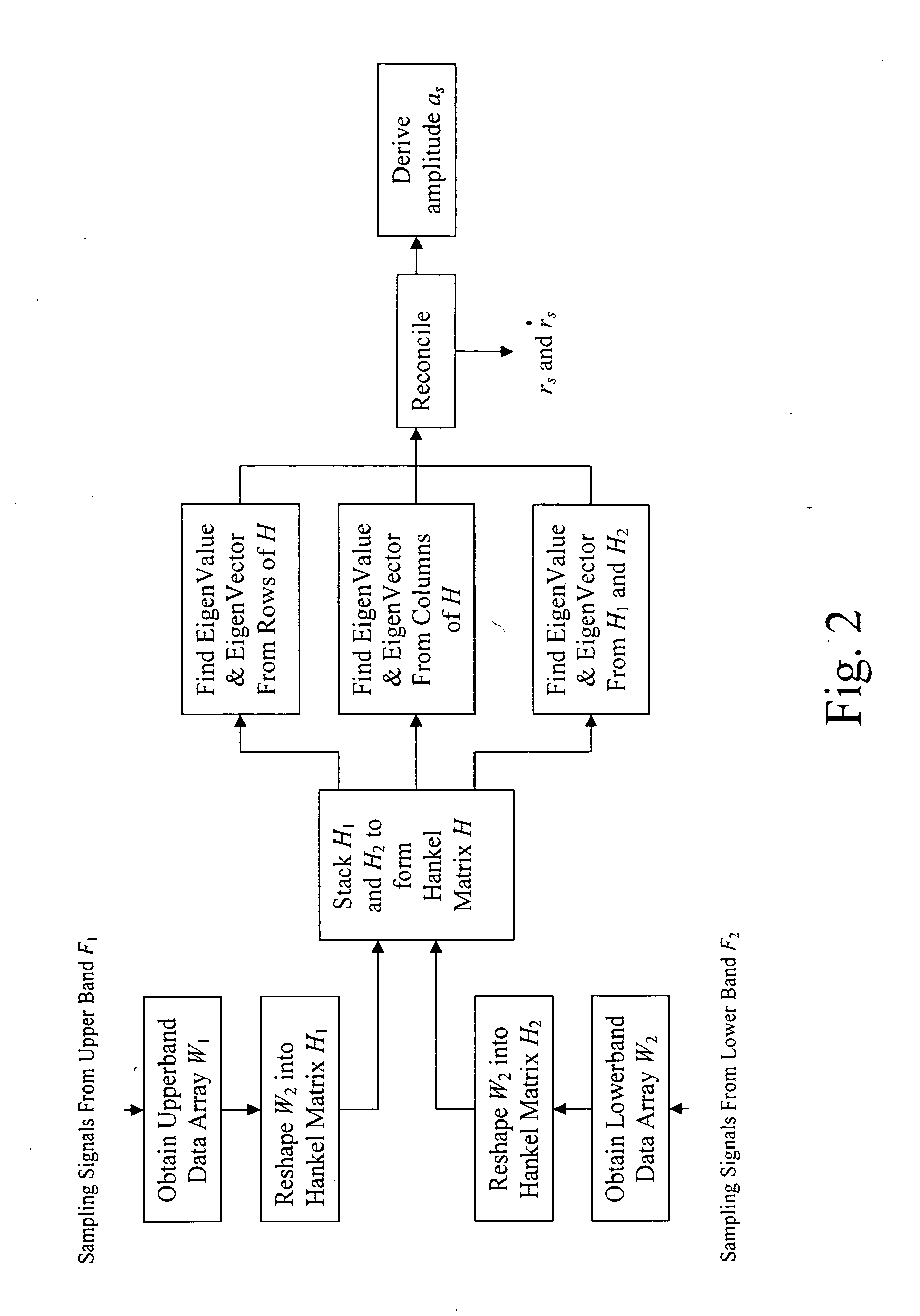Super-resolution based on frequency domain interferometric processing of sparse multi-sensor measurements
a multi-sensor, sparse technology, applied in the direction of instruments, measurement devices, using reradiation, etc., can solve the problems of inability to achieve the full resolution benefit implied by the frequency separation of sensors, the resolution achieved by the burg algorithm is limited to a factor of 2 or 3, and the number of frequency-shifted pairs required to achieve the effect of reducing the bandwidth requirements for each band and reducing the number of frequency-shifted pairs
- Summary
- Abstract
- Description
- Claims
- Application Information
AI Technical Summary
Benefits of technology
Problems solved by technology
Method used
Image
Examples
Embodiment Construction
[0013] As shown in FIG. 1, the theoretical basis for frequency-domain interferometry can be illustrated by a system using a single scattering center illuminated by radar or sonar sensors operating in two frequency bands, namely, an upper band and a lower band separated from each other by ΔF Hz. As shown, the system has two sensors (transceivers) 12 and 14 operative to generate and transmit acoustic, optical or electromagnetic illumination and to receive reflected signals of the illumination from the scattering center 10. The bandwidth of the upper and lower bands is denoted as B. As the resolution obtained from the system is proportional to the frequency separation ΔF between the upper and lower bands, the frequency separation ΔF is preferably no less than ten times the bandwidth B. That is, the bandwidth B is no more than 10% of the frequency separation ΔF.
[0014] The location of the scattering center 10 is referred as a range r0 with respect to a phase reference origin. When illum...
PUM
 Login to View More
Login to View More Abstract
Description
Claims
Application Information
 Login to View More
Login to View More - R&D
- Intellectual Property
- Life Sciences
- Materials
- Tech Scout
- Unparalleled Data Quality
- Higher Quality Content
- 60% Fewer Hallucinations
Browse by: Latest US Patents, China's latest patents, Technical Efficacy Thesaurus, Application Domain, Technology Topic, Popular Technical Reports.
© 2025 PatSnap. All rights reserved.Legal|Privacy policy|Modern Slavery Act Transparency Statement|Sitemap|About US| Contact US: help@patsnap.com



